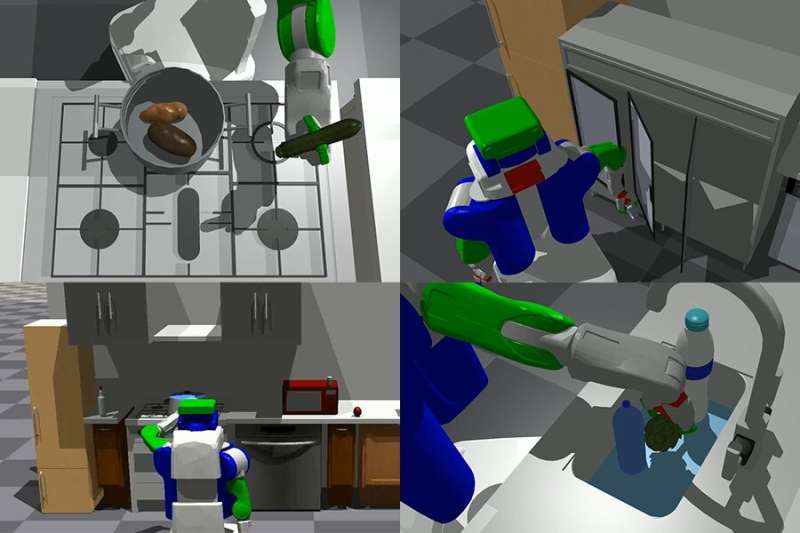There is no end to what all human beings can do, but at the same time, there remains little that we do better than growing on a consistent basis. This tendency to improve, no matter …
There is no end to what all human beings can do, but at the same time, there remains little that we do better than growing on a consistent basis. This tendency to improve, no matter the situation, has empowered the world to clock some huge milestones, with technology emerging as quite a major member of the group. The reason why we hold technology in such a high regard is, by and large, predicated upon its skill-set, which guided us towards a reality that nobody could have ever imagined otherwise. Nevertheless, if we look beyond the surface for a second, it will become clear how the whole runner was also very much inspired from the way we applied those skills across a real world environment. The latter component, in fact, did a lot to give the creation a spectrum-wide presence, and as a result, initiate a full-blown tech revolution. Of course, this revolution eventually went on to scale up the human experience through some outright unique avenues, but even after achieving a feat so notable, technology will somehow continue to bring forth the right goods. The same has turned more and more evident in recent times, and assuming one new manufacturing themed development ends up with the desired impact, it will only put that trend on a higher pedestal moving forward.
The researching team at MIT Computer Science & Artificial Intelligence Lab has successfully developed a new AI system called PIGINet, which is designed to enhance the problem-solving capabilities of household robots. Before we get into the nitty-gritty of this new development, we first need to understand how household robots actually work at the moment. So, basically, they attempt various task plans and iteratively refine their moves until they find a feasible solution. Such an approach, like you can see, is pretty time-consuming, and despite the time investment required, it still makes no guarantees whatsoever about the robot’s efficiency in adapting to a set of conditions that are, more or less, always in motion. With there being a lack of stable conditions, the chances for a household robot to actually fulfill the task as needed become agonizingly low. But how does PIGINet solve the stated conundrum? Well, it starts by facilitating seamless interpretation of stuff like “plans, images, goal, and initial facts.” Once that bit is done, the system moves on to predicting the probability that a task plan can be refined, thus fuelling the robot’s bid to find feasible motion plans. On a more actionable note, though, PIGINet deploys a transformer encoder, along with a versatile and state-of-the-art model designed to operate on data sequences. While the data sequences refer to the task plans, images of the environment, and symbolic encodings of the initial state and the desired goal a robot is planning to pursue, it is encoder’s job to combine all that information and make predictions as accurate as technologically possible.
“Because everyone’s home is different, robots should be adaptable problem-solvers instead of just recipe followers. Our key idea is to let a general-purpose task planner generate candidate task plans and use a deep learning model to select the promising ones. The result is a more efficient, adaptable, and practical household robot, one that can nimbly navigate even complex and dynamic environments. Moreover, the practical applications of PIGINet are not confined to households,” said Zhutian Yang, MIT CSAIL Ph.D. student and lead author on the work.
To test out their breakthrough, the researchers created hundreds of simulated environments, each with different layouts and specific tasks that require objects to be rearranged among counters, fridges, cabinets, sinks, and cooking pots. Basing their measurements on the time taken to solve different problems, the team compared PIGINet against other methods promising a somewhat similar proposition. Going by the available details, PIGINet showcased an ability to reduce planning time by almost 80% when placed in simpler scenarios and 20%–50% in more complex scenarios.
As for challenges faced during the creation of PIGINet, one was scarcity of good training data. Fortunately enough, the team would rope in vision language models and data augmentation tricks to solve their conundrum.
“The core bottleneck in such problems is how to determine a high-level task plan such that there exists a low-level motion plan that realizes the high-level plan. Typically, you have to oscillate between motion and task planning, which causes significant computational inefficiency. Zhutian’s work tackles this by using learning to eliminate infeasible task plans, and is a step in a promising direction,” Beomjoon Kim Ph.D. ’20, assistant professor in the Graduate School of AI at Korea Advanced Institute of Science and Technology (KAIST).
For the future, though, the team is hoping to discover the necessary means through which PIGINet can suggest alternate task plans after identifying infeasible actions, something that will further speed up the generation of feasible task plans without the need of big datasets usually required for training a general-purpose planner from scratch.




